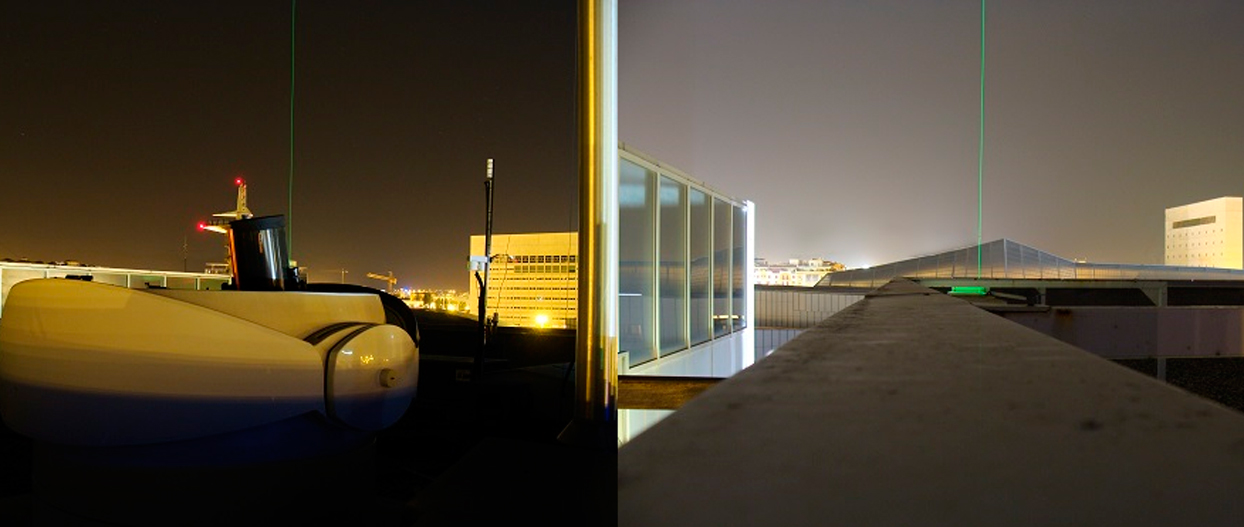
Project data:
- Ref. Grant Agreement 778349
- Realization: 01/03/2018 a 31/08/2023
- DOI10.3030/778349
- Funding Agency: H2020-MSCA-RISE-2017 (Marie Sklodowska-Curie Research and Innovation Staff Exchange). EU
- Principal Investigator: Daniel Pérez Ramírez.
- Researchs: Lucas Alados Arboledas, Francisco José Olmo, Hassan Lyamani, Juan Andrés Casquero Vera, Carlos Toledano, Roberto Román, Philippe Goloub, Tatsiana Lapyonak, Oleg Dubovik, Thierry Podvin, Jürgen Fischer, Victor Tiikhovets, David Fuertes, Yana Karol, Anton Lopatin, Pavel Litvinov, Michael Asperberger, Michael Sicard, Arlindo da Silva, David N. Whiteman, Vanderlei Martins, Zhengqiang Li, Igor Veselovskii, Milagros Herrera
- Webpage of the project 778349 (spanish)
Abstract
This is a four-years H2020 Marie Sklodowska-Curie Research Innovative Staff Exchange (H2020-MSCA-RISE-2017 Grant Agreement 778349) project with a total funding of 855,000.00 €. The project is led by the University of Granada and consists of a consortium of top universities in Spain (University of Granada, University of Valladolid, Polytechnic University of Catalonia), France (University of Lille), Germany (Free University of Berlin), research institutes in France (CNRS) and Ukraine (Institute of Radioastronomy of the National Academy of Sciences) and private entities (GRASP.SAS and Cloudflight). There are also partners in USA (NASA Goddard Space Flight Center and University of Maryland Baltimore County), China (Institute of Remote Sensing and Digital Earth of the Chinese Academy of Sciences), Russia (Physics Instrumentation Center of Prokhorov General Physics Institute of the Russian Academy of Sciences) and Argentina (National Scientific and Technical Research Council).
The project deals with reducing the uncertainties associated with the knowledge of aerosol microphysical vertical profiles worldwide through the use of new space-borne measurements. This objective linked with the goal of the last IPCC 2013 to reduce uncertainties in aerosol direct effects, particularly in the knowing of absorption profiles. The approach we plan to develop is the development and applicability of the Generalized Retrieval of Atmosphere and Surface Properties (GRASP) for new space borne systems. GRASP has been already applied successfully to the POLDER/PARASOL system providing column-integrated aerosol microphysics and absorption.
However, the new LIDAR space-borne sensors open new possibilities. To that end, we plan to study the details in constraints of the current techniques for the retrieval of aerosol microphysics from multi-wavelength lidar alone (known as the 3β+2α configuration), and will make evaluation studies versus in-situ instruments from large field campaigns such as DISCOVER-AQ and SEACR4S from NASA or SHADOW from the University of Lille. However, lidar measurements are difficult and usually presents low signal-to-noise ratio, particularly during daytime. We plan here to develop a joint inversion that uses combine measurements of lidar and polarimetric spaceborne systems.
Such approach was proposed in the Aerosol-Clouds-Ecosystems (ACE) NASA missions is the core of the upcoming Aerosol-Clouds, Convections-Precipitations (ACCP) NASA mission. The validation of this new GRASP retrieval scheme will involve the use of synthetic database simulated using the NASA GEOS-5 model which will be used as reference. Different configurations of lidar and polarimeters will be studied to invert microphysical parameters.Also, joint inversion will be evaluated using experimental measurements on NASA field campaigns that include airborne lidar systems such as HSRL-2 and polarimeter systems such as AirHARP.